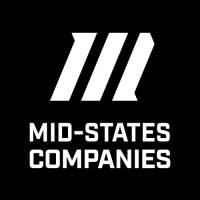Challenges
Tired of traveling globally for large manufacturing firms, Francis Nwabudike decided to go into business for himself, starting SpaceManager Closets. The company designs, manufactures, and installs custom-built closets and later added custom-designed and manufactured home office cabinets, pantry closets, garage cabinets, wall beds/murphy beds, entertainment systems, and more.
Operating in a state-of-the-art manufacturing facility in Houston, TX, SpaceManager Closets uses the latest in CAD design technology to create 3D renderings of a customer’s design, which then feed directly into its manufacturing equipment and processes. Each storage system is manufactured by a dedicated team guiding the production from start to finish. The custom cabinetry and hardware then are installed by trained SpaceManager installers.
The SpaceManager Closets team is passionate about making life more “efficient and enjoyable by providing intelligent closet storage solutions that put things in their proper place.” The company is laser-focused on providing quality products and exceptional customer service.
Like many small firms starting out, Nwabudike launched the company with QuickBooks Online. “it’s a nice piece of software but limited,” he says.
SpaceManager also used Job Nimbus, a CRM for the roofing industry. “It was pretty decent, and because my business has a mobile sales team, I needed a way to capture data and manage the process,” he says. Job Nimbus helped him manage the field side of the business, but it didn’t do anything else. And QuickBooks Online, while also decent, he says, didn’t have a robust CRM.
“We quickly saw everything was becoming limited and began using spreadsheets to manage things. But my goal is to grow as fast as I can for as long as I can, so it was very obvious in our first year that we weren’t going to make it with QuickBooks.”
Needed: Standalone, More Efficient Platform
Nwabudike’s long-term plan is to expand into other Texas markets, and then grow regionally. But first, he needed to create a standalone operation with efficient systems and processes that could be replicated easily and affordably.
Multiple applications were required to manage inventory, which ended up causing problems. “We didn’t have a purchasing system, and purchase orders only had a customer name and a date. We didn’t have a receiving system and we could never tell how much we had in inventory,” Nwabudike says. “We only did an annual inventory count, which obviously is not a good place to be.”
Without efficient processes, the company stumbled as it started to grow. “We didn’t have inventory to grow, and we were missing raw materials in the first six months.”
Nwabudike realized he needed other applications to gain the functionality he wanted but knew, having worked in larger organizations, that he didn’t want to build a siloed system.
He had worked with several ERPs while at large companies. “SAP, while pretty complicated, worked well, but I know we had a humongous bill and needed an army of people to run it,” he says. “I never knew what they did and didn’t want to do that because we couldn’t afford to hire someone just to run the ERP.”
Nwabudike wanted a modern manufacturing-based solution that could manage the company’s purchasing, inventory, manufacturing, field service, financial management, and customer needs in one place. He wanted it to be cloud-based and affordable.
“It wasn’t an easy search,” he says. He evaluated Oracle NetSuite, Microsoft Dynamics 365 Business Central, and Acumatica Cloud ERP








